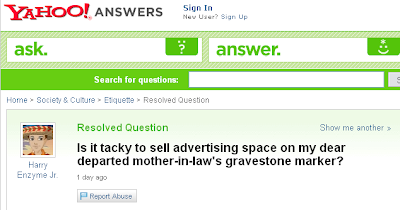Big news today, if you haven't heard already: Google
released a 3D chat app called
Lively. It's the same thing that was being tested at a university in Arizona last winter, and probably the same thing that was
rumored about in January 2007 and
anticipated as early as 2006.
In a nutshell, it's a 3d chat app where users can customize avatars and create environments (rooms) with stuff they pick from a
product catalog. You need to install a browser (FF, IE, Win-only) plug-in to participate. And while it is not exactly an MMO, it is more similar to Second Life than
early commentators admit.
First impressions:
1. While object creation is a process open only to participants hand-picked by Google (see a
press release by Rivers Run Red, a creator of Second Life presence for many companies), Lively seems designed to be integrated with SketchUp and
3D Warehouse at some point. This would open doors not only to user-generated stuff, but also to branded objects (such as
virtual Whirlpool appliances).
 Rivers Run Red has a room in Lively, and so does Linden Lab.
Rivers Run Red has a room in Lively, and so does Linden Lab.2. While all of the stuff I've seen in the catalog is free, the very fact that there's a price tag at all hints at a potential marketplace for virtual stuff.
3. The integration with the "flat" web is pretty tight. Each room has a "real" URL (here's
Google's), each room can be embedded on other sites (and viewable with the plug-in), some objects can play YouTube videos and show pictures hosted elsewhere.
4. Characters can be equipped with animation scripts.
5. Similarly to Second Life, Lively allows movement around the environment and camera manipulation, and like in Second Life, the controls are not terribly intuitive.
6. Objects can be fitted with hyperlinks to "flat" web pages, just like the lava lamp on the screen cap below pointing to AdLab. This could probably result in some sort of on-the-spot transactional activity: you click on the lamp in my room and a window pops up offering you to buy the real thing.
7. There are half-rumors half-expectations that Lively will be somehow integrated into Orkut, which seems possible since Lively uses the same system-wide Google login.

Lively, of course, will become more, well, lively when Google integrates it with SketchUp and allows user- and brand-generated assets to become part of the marketplace. It could also be hypothetically integrated with Google Earth so that Lively "rooms" become inhabitable interiors of the 3D models on Earth or maybe in the sky.
A lof ot related links from AdLab's past years here, so I'll just give a couple of broad pointers:
Google and virtual worldsVirtual worlds in general
Posts related to
Second LifeAdvertising in games
























